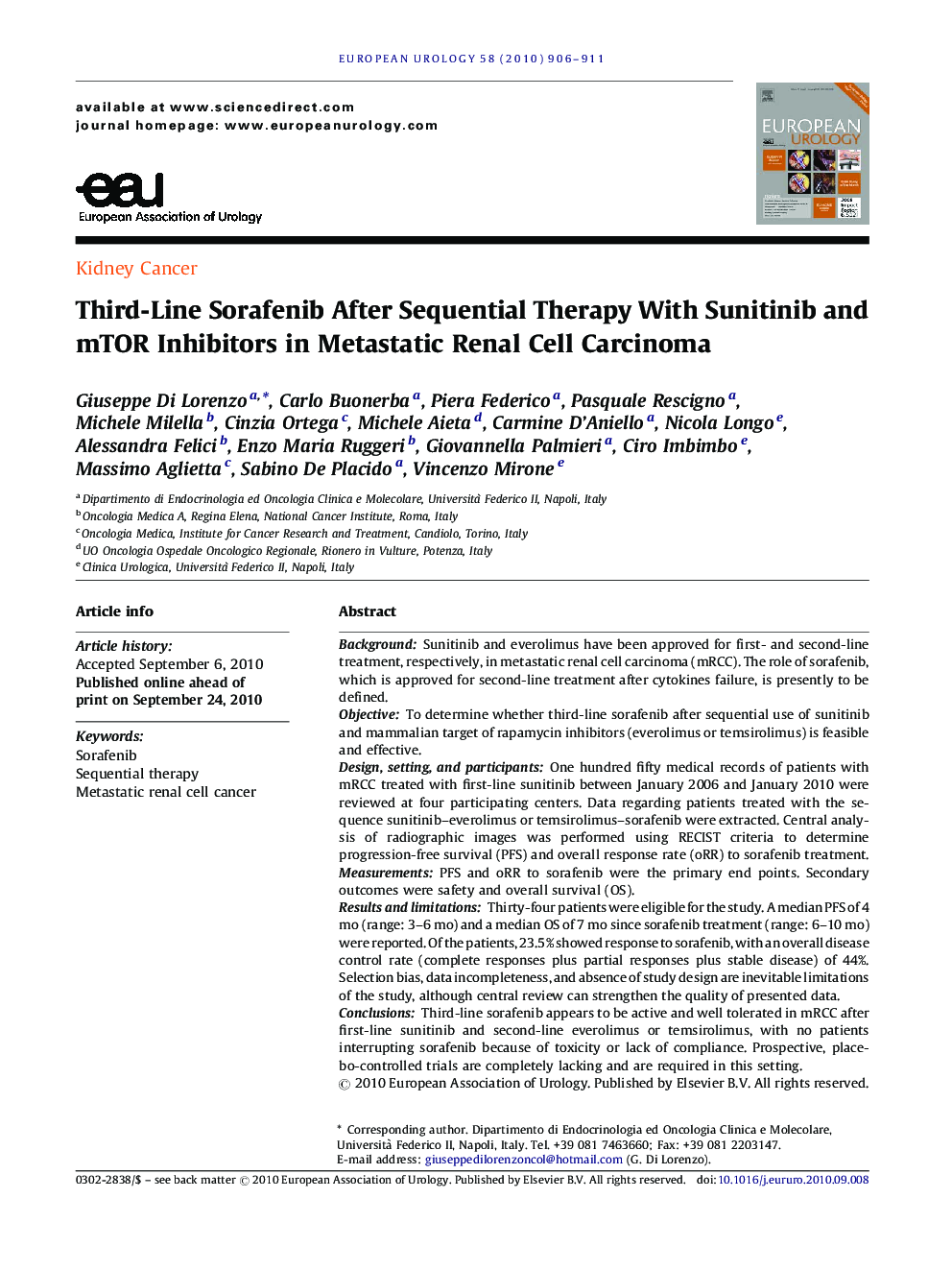| Article ID | Journal | Published Year | Pages | File Type |
|---|---|---|---|---|
| 3926004 | European Urology | 2010 | 6 Pages |
BackgroundSunitinib and everolimus have been approved for first- and second-line treatment, respectively, in metastatic renal cell carcinoma (mRCC). The role of sorafenib, which is approved for second-line treatment after cytokines failure, is presently to be defined.ObjectiveTo determine whether third-line sorafenib after sequential use of sunitinib and mammalian target of rapamycin inhibitors (everolimus or temsirolimus) is feasible and effective.Design, setting, and participantsOne hundred fifty medical records of patients with mRCC treated with first-line sunitinib between January 2006 and January 2010 were reviewed at four participating centers. Data regarding patients treated with the sequence sunitinib–everolimus or temsirolimus–sorafenib were extracted. Central analysis of radiographic images was performed using RECIST criteria to determine progression-free survival (PFS) and overall response rate (oRR) to sorafenib treatment.MeasurementsPFS and oRR to sorafenib were the primary end points. Secondary outcomes were safety and overall survival (OS).Results and limitationsThirty-four patients were eligible for the study. A median PFS of 4 mo (range: 3–6 mo) and a median OS of 7 mo since sorafenib treatment (range: 6–10 mo) were reported. Of the patients, 23.5% showed response to sorafenib, with an overall disease control rate (complete responses plus partial responses plus stable disease) of 44%. Selection bias, data incompleteness, and absence of study design are inevitable limitations of the study, although central review can strengthen the quality of presented data.ConclusionsThird-line sorafenib appears to be active and well tolerated in mRCC after first-line sunitinib and second-line everolimus or temsirolimus, with no patients interrupting sorafenib because of toxicity or lack of compliance. Prospective, placebo-controlled trials are completely lacking and are required in this setting.
